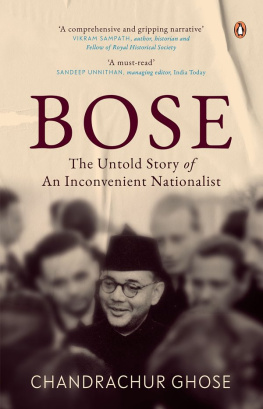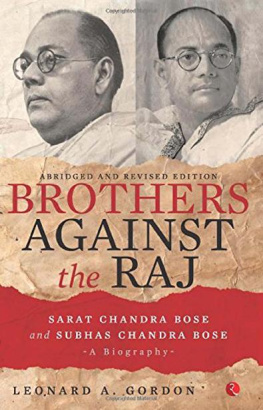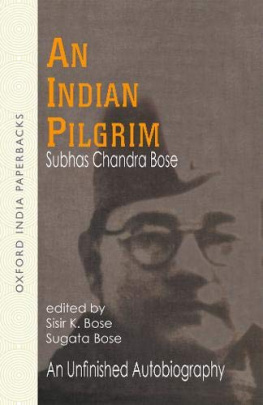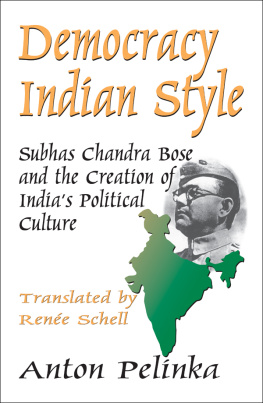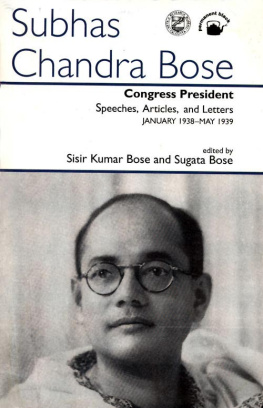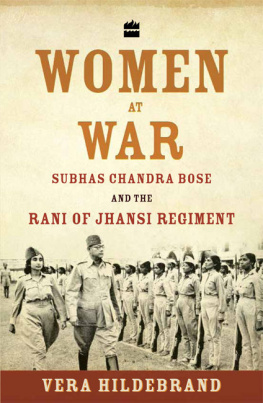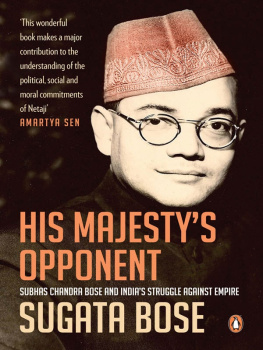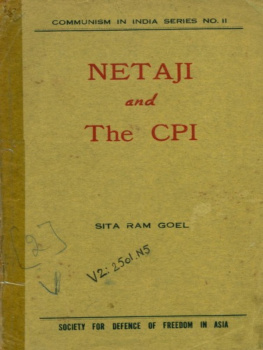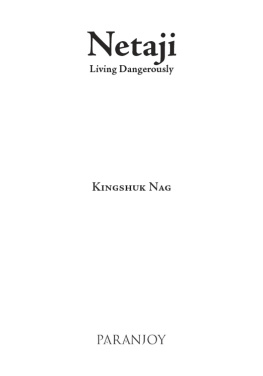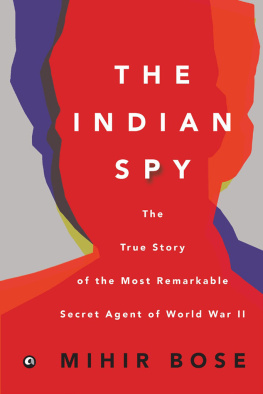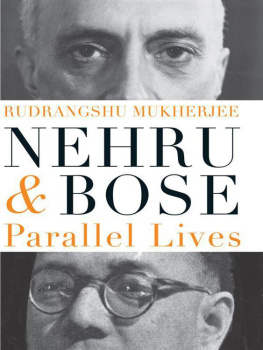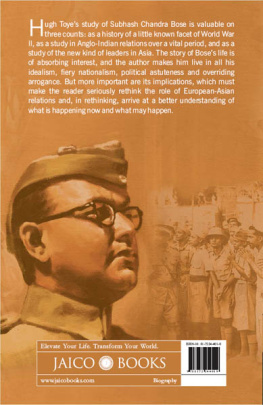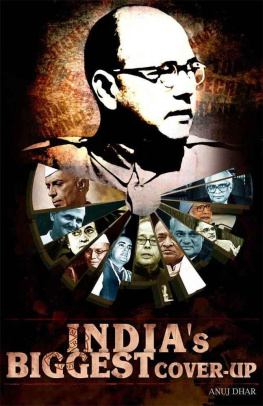1
The Early Years
T he boys of the seventh class at the Ravenshaw Collegiate School, in Cuttack, rolled in laughter while the teacher read out an essay written in Bengali. The teacher occasionally paused to savour and comment upon the spelling, grammar and the style, and joined in the laughter. He was reading out an essay written by a boy who recently moved into the school from the very English Protestant European School. Although the boy was new to the school, he was treated with some respect for his knowledge of the English language and his reputation as a good student. Moreover, he came from a well-known family. His father was the first elected chairperson of the city municipality, and also the public prosecutor. The immediate reason for the burst of mirth in the class was the boys poor knowledge of the Bengali language; that too, being a Bengali himself. It was ironic that learning this language was the reason for the boy changing schools, since the Calcutta University had made it a compulsory study in matriculation, intermediate and degree examinations. The diffident twelve-year-old at the receiving end of the ridicule was mortified, but at the same time made a calm resolve to overcome the shame. By the end of the year, the young boy with a heavy sounding name made good on the promise to himself. Subhas Chandra Bose scored the highest marks in Bengali in the annual examination.
Apart from this minor incident, moving to an he had to stop learning Latin after leaving the earlier school, he continued with learning Sanskrit from a pundit at home; and the Sanskrit lessons continued to reinforce the virtues of an obedient good boy. Seven years of being assessed on conduct, deportment, neatness and punctuality at the previous school had also left its mark on his mental make-up.
Belonging to an affluent family with an aristocratic lineage going back several centuries, headed by a self-made man who excelled professionally as a lawyer and made his mark in social and to an extent in political circles, life for Subhas was comfortable, but devoid of luxury. The large establishment comprising five older siblings, cousins, uncles and several attendants, made him feel insignificant, but also inculcated the values of sharing space. Absence of parochialism or religious discrimination in father Janakinath too made a lasting impact. Far from being irreligious, Janakinath was a religious eclectic, influenced by the Brahmo Samaj, as well as the Shakta and Vaishnava schools of Hinduism. Mother Prabhabati, a strong-willed lady in charge of the household, was also of a religious disposition.
Like most other children of that
After an emotional farewell, however, the teacher and the pupil started a correspondence... which went on for some years. Beni Madhav instilled in Subhas a habit of contemplating on nature. This, Subhas wrote many years later, helped him to concentrate his mind, as well as to appreciate the works of Wordsworth, Kalidas and fall back upon the Mahabharata (which he was studying in the original Sanskrit now) in a new light.
While Beni Madhavs guidance opened new horizons to an inquisitive and sensitive mind, it was
It was at this time, grappling with the mental and physical changes, and trying to find something beyond what Beni Madhavs guidance could provide, that Subhas discovered Vivekananda.
I was barely fifteen when Vivekananda entered my life. Then there followed a revolution
This discovery helped settle his biggest question, that of the goal of life. Atmanomoksharthamjagathitaya cha (for your own salvation and for the service of humanity life further accentuated Subhass inner struggle.
Ramakrishnas example of renunciation and purity entailed a battle royal with all the forces of the lower self. And Vivekanandas ideal brought me into conflict with the existing family and social order.
Fortunately for Subhas, he found companions in his obsession with Ramakrishna and Vivekananda, who would discuss the ways of spiritualism began for a guru, essential for guiding and leading to the goal of salvation.
However, the road to salvation laid down by Vivekananda was not only about practising yoga. No less important was the service of the downtrodden. Serving the poor, as taught by him, was the same as worshipping God. The young group thus started on this route too. They started visiting nearby villages offering their services. Subhas mentioned one instance in which they went and taught in the local school. While they were welcomed in some cases, in others, they were looked upon with suspicion. There was a transition from social service to national service when a visitor came to town with messages not thought about by Subhas or his group till then.
Around the time of Durga Puja (usually held in October) in 1912, Hemanta to each other. The next four days were spent in day-long discussions, often spilling over to late evenings; and thus started a relationship that endured through several emotional crests and troughs, spread over three decades.
Hemanta was already a member of a group led by Suresh Chandra Banerjee, a senior Medical College student in Calcutta. Banerjee and his associates, soaked in the philosophy
With the passing of time, Subhass spiritual quest became more serious, and his studies took a back seat, even though the final examinations in the school were approaching. Even gurus who were not religious mendicants or sannyasis seemed to lose their appeal to him. To add to the woes of his parents, Subhas now started going around and Prabhabati enough to make them decide that Subhas should be moved out of Cuttack. Calcutta, a melting pot with a much larger and varied population, was more likely to cure him of his eccentricities, if Subhas could be pulled out of his group in the small town.
Subhas, however, surprised everyone with his results in the matriculation examination in 1913. Proving his brilliance as a student,
Following in the footsteps of his elder brothers, Subhas took admission for Intermediate Arts in the prestigious Presidency College, with Philosophy as the major subject. This decision was in keeping with his spiritual Thus, as he stepped into college, Subhas had no long-term worldly ambition.
Subhas was more fortunate than his elder brothers in the matter of accommodation in Calcutta. Unlike his elder brothers Sarat and Satish, who had to stay in the Eden Hindu Hostel, Subhas stayed in the house built by Janakinath in 1909 at 38/2 near the Calcutta University, which was the meeting place for the members of the group. Banerjee later wrote in his autobiography:
The very first time I met him, I realised that one day he would be
With Hemanta and others, Subhas often travelled to Daulatpur College in Khulna, a key recruiting ground for the revolutionary groups and frequented by the top revolutionaries of the time, including Jatindranath Mukhopadhyay. In Daulatpur College, Subhas

